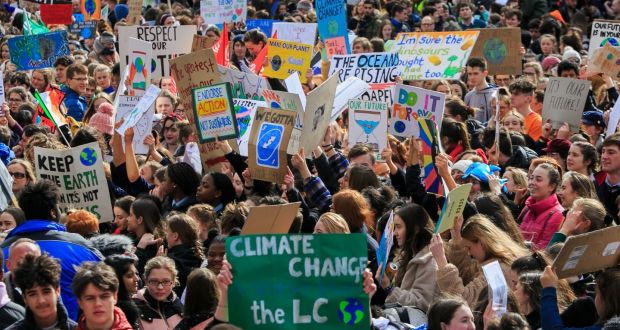



 June 17, 2019
The Irish Times
June 17, 2019
The Irish Times
| Ireland | energy: future

An Irish climate-change plan includes environmental levies, higher fees on hard-to-recycle materials, non-recyclable and single-use plastic ban, and a retrofit of 500,000 homes. By 2030, 70% electricity from renewables, 950,000 electric vehicles, national charging network, petro/diesel ban, and zero-emission zones. By 2050, net zero-carbon emissions.

